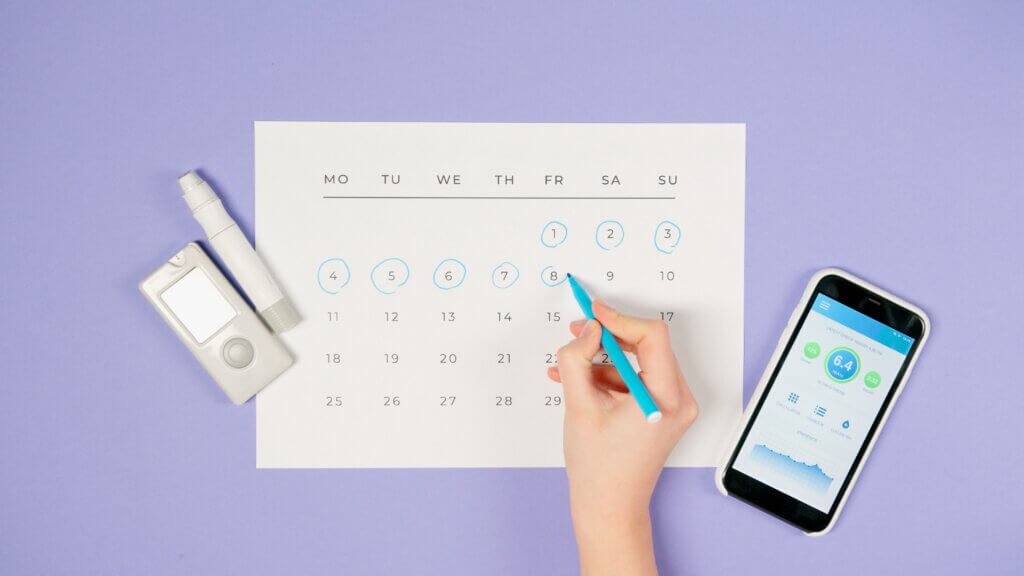After reading this article, you’ll:
- Comprehend the importance and benefits of integrating telemedicine apps with EHRs, such as automated data entry, improved virtual care experience, enhanced patient engagement, and robust data analytics.
- Gain an understanding of the challenges associated with this integration, including compatibility issues, costs, data privacy concerns, and technical barriers, and learn strategies to overcome these obstacles effectively.
- Acquire knowledge on how to implement EHR integration in your healthcare setting and comprehend future perspectives in this dynamic and evolving field of healthcare technology.

Integration of telemedicine app data with electronic health records (EHRs)
Healthcare systems around the globe are continually evolving to enhance patient care and improve outcomes. A key aspect of this evolution is the integration of telemedicine apps with Electronic Health Records (EHRs). This integration allows for a seamless exchange of information, enhancing the virtual care experience for both providers and patients, and enables robust data analytics. Achieving successful integration requires the help of developers with custom mhealth app development experience. With a deep understanding of healthcare app development and a proven track record of integrating telemedicine apps with EHR systems, the Dogtown Media team stands at the forefront of this technological transformation.
This article explores the benefits and challenges of integrating telemedicine apps with EHRs, provides guidance on implementing such integration, and looks at future perspectives in this dynamic area of healthcare technology.
Benefits of Integrating Telemedicine Apps With EHRs
Automated Data Entry and Work Processes
 The integration of telemedicine apps with electronic health records can significantly streamline healthcare work processes by enabling automated data entry. Traditionally, healthcare staff had to manually input data such as patient demographics, medical history, clinical notes, and other pertinent information into EHRs. This process was time-consuming, subject to human error, and could often lead to duplicated data or omissions.
The integration of telemedicine apps with electronic health records can significantly streamline healthcare work processes by enabling automated data entry. Traditionally, healthcare staff had to manually input data such as patient demographics, medical history, clinical notes, and other pertinent information into EHRs. This process was time-consuming, subject to human error, and could often lead to duplicated data or omissions.
However, with the advent of telemedicine apps and their integration with EHRs, the process has been significantly refined. Now, healthcare providers can directly input patient information into the EHRs during virtual visits, reducing administrative overhead and improving the quality of data. The alignment of telemedicine and EHR systems also allows providers to readily access and update patients’ health information, leading to improved efficiency in work processes. Automation in data entry reduces the burden of paperwork, freeing up medical personnel to focus on patient care.
Improved Provider-Patient Virtual Care Experience
The integration of telemedicine apps and EHRs significantly enhances the virtual care experience for both providers and patients. For providers, having access to a comprehensive view of the patient’s health data can be critical in making informed decisions about diagnosis and treatment. The complete history, current medications, allergies, laboratory results, and other relevant data are available at their fingertips during the virtual consultation.
For patients, the benefits are equally significant. They can easily access their medical records, appointments, medication lists, and healthcare provider instructions from a single platform, leading to a smoother and more convenient healthcare experience. The ability to quickly and easily share their health data can lead to more accurate diagnoses, improved treatment adherence, and better health outcomes. Moreover, the integration of telemedicine with EHRs creates a seamless continuum between virtual and in-person care, improving overall care quality.
Enhanced Patient Engagement and Communication
The integration of telemedicine apps with EHRs can significantly enhance patient engagement and communication. Active engagement of patients in their healthcare is linked to improved health outcomes, and EHRs provide an excellent platform for this engagement. Patients can readily access their health records, monitor their progress, schedule appointments, and communicate with their healthcare providers directly through the telemedicine app.
This transparency empowers patients to become more active participants in their health management. They gain a better understanding of their health conditions and treatment plans, which can result in improved medication adherence and follow-through with prescribed treatments. Additionally, direct communication with healthcare providers can result in quicker resolution of health issues and prompt changes to treatment plans when necessary.
Robust Data Analytics and Reporting
The integration of telemedicine apps with EHRs also paves the way for robust data analytics and reporting. Combining data from various sources into a single platform provides a rich dataset that healthcare providers can use to track health trends, analyze patterns, and make evidence-based decisions about patient care. This can support population health management, predictive analytics, and strategic decision-making in healthcare.
Moreover, the consolidated and up-to-date health data can be used for more accurate and efficient reporting. It aids in regulatory compliance, quality assurance, and performance measurement. Furthermore, with access to comprehensive patient data, healthcare providers can better assess the effectiveness of treatment plans, identify areas for improvement, and tailor care to individual patient needs.
Prevention and Management of Chronic Diseases
 Telemedicine apps and EHRs integration can play a significant role in the prevention and management of chronic diseases. Through the telemedicine app, patients can regularly record and monitor their health metrics such as blood pressure, glucose levels, heart rate, and physical activity data.
Telemedicine apps and EHRs integration can play a significant role in the prevention and management of chronic diseases. Through the telemedicine app, patients can regularly record and monitor their health metrics such as blood pressure, glucose levels, heart rate, and physical activity data.
When this data is integrated with the EHR, it provides healthcare providers with a comprehensive and longitudinal view of the patient’s health, enabling them to detect early signs of chronic conditions and adjust treatment plans in a timely manner. Such proactive healthcare can help in preventing disease progression, improving management of chronic conditions, and potentially reducing hospitalization rates.
This continuous monitoring allows healthcare providers to educate patients about the impact of lifestyle changes on their health condition, thereby promoting healthier habits and empowering patients to take an active role in managing their health. This patient-centered approach not only enhances the quality of care but also improves patient satisfaction and adherence to treatment plans.
Common EHR Integration Challenges
Compatibility problems
One of the most significant challenges of integrating telemedicine apps with EHRs is the issue of compatibility. Not all systems are built on the same platform or use the same standards, which can result in difficulties when attempting to integrate the two. Some telemedicine apps might use proprietary software or coding that is not compatible with certain EHR systems. The integration process might also be hindered if the EHR system is outdated or unable to support the capabilities of advanced telemedicine apps. This lack of interoperability can lead to functional issues, making it challenging to share or access data across platforms effectively.
Costs
Integration can often be a costly endeavor. Healthcare providers may have to invest in software upgrades or new systems to facilitate integration. In addition, there might be costs associated with customizing the EHR system to meet the unique needs of the healthcare provider or to adapt to the specific features of the telemedicine app. On top of these initial costs, ongoing expenses for maintenance, updates, and potential troubleshooting can also add up. For small healthcare facilities or those with limited resources, these costs might pose a significant financial burden.
Data Privacy
Protecting patient data is a key concern when integrating telemedicine apps with EHRs. The transfer and storage of health information need to meet strict regulatory standards, such as the Health Insurance Portability and Accountability Act (HIPAA) in the U.S., to ensure the confidentiality and privacy of patient data. Any vulnerability in the systems could lead to potential data breaches, with severe consequences for patient privacy and the reputation of the healthcare provider. Therefore, healthcare providers must invest in secure systems and practices to ensure patient data’s safety.
Integration Complexity and Technical Barriers
EHR integration is a complex process involving numerous technical aspects, from establishing a secure data exchange to ensuring seamless functionality across systems. These technical challenges can often create barriers to successful integration. For instance, healthcare providers may lack the in-house technical expertise needed for the integration, necessitating the hiring of external consultants or IT professionals. Further, the process of integration may disrupt the normal functioning of the healthcare facility and require extensive staff training, creating additional challenges. Overall, managing the complexity and overcoming the technical barriers associated with EHR integration can be a daunting task.
How to Implement EHR Integration
Check If Both Systems Are Compatible
Before starting the integration process, it’s crucial to check whether your telemedicine app and EHR system are compatible. This compatibility check should involve assessing the software platforms, data formats, and communication protocols used by both systems.
Clean and Organize Your Data Before Integrating
Data cleaning and organization are key initial steps in the integration process. Ensure that your data is accurate, consistent, and organized in a way that the EHR system can understand and process. This will help avoid data discrepancies and inconsistencies post-integration.
Select Integration Standards and Protocols
To ensure seamless data transfer, choose integration standards and protocols that both systems can understand and work with. Consider standards such as HL7, FHIR, or DICOM, which are widely used in healthcare for data interchange.
API’s and Interfaces
APIs (Application Programming Interfaces) and interfaces serve as the bridge between your telemedicine app and EHR system. Ensure that the APIs can adequately handle data transmission between the two systems without causing functionality issues.
Data Security and Privacy
Ensure the integration process adheres to all data security and privacy regulations. Protect patient information by implementing secure data exchange protocols and encryption methods. Regularly review and update these measures to maintain robust data security.
Test and Debug
Testing is a crucial part of the integration process. Run tests to ensure data is transferred correctly and the systems function as intended. Any issues or bugs identified during testing should be debugged before the system goes live.
Monitoring and Maintenance
After integration, regular monitoring and maintenance are necessary to ensure ongoing performance. Monitor the systems for any errors or issues and maintain them regularly with updates, patches, and security enhancements.
Training and User Adoption
Lastly, ensure your healthcare staff is trained on the new integrated system and are comfortable using it. Promote user adoption by demonstrating the benefits of the system and providing support during the transition period. This step can be pivotal in the success of your EHR integration.
Future Perspectives of EHR and Telemedicine Integration
The future of EHR and telemedicine integration looks promising, with advancements in AI, machine learning, and predictive analytics. These technologies will likely enhance data analysis capabilities, leading to more personalized patient care and improved health outcomes. Additionally, the advent of 5G technology is expected to improve data transfer speeds and facilitate more seamless and real-time exchange of information. This ongoing evolution will undoubtedly enhance the integration, functionality, and utility of telemedicine apps with EHRs, transforming healthcare delivery further.
The integration of telemedicine apps with EHRs offers numerous benefits, from streamlined workflows to improved patient care. However, it also presents challenges, such as compatibility issues, costs, and data privacy concerns. These hurdles can be overcome with careful planning, selecting appropriate standards and protocols, and investing in training and maintenance. With technological advancements on the horizon, the future of EHR and telemedicine integration holds immense potential for transforming healthcare, making it more efficient, personalized, and patient-centered.





